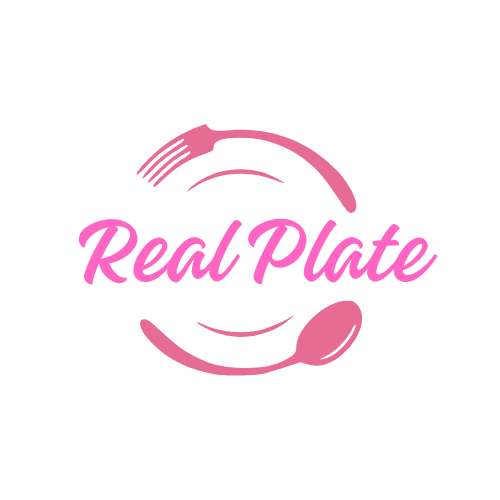Introduction:
Are you on the hunt for the ultimate cheese sauce recipe that’s versatile, creamy, and delicious? Look no further! Cheese sauce is a culinary staple that transforms everyday dishes into unforgettable meals. Whether you’re topping steamed broccoli, creating the perfect mac and cheese, or whipping up a game-day nacho platter, the right cheese sauce recipe is your secret weapon in the kitchen.
In this blog, we’ll explore 5 irresistible cheese sauce recipes that are easy to make and tailored for every meal. Say goodbye to store-bought sauces and hello to rich, velvety, homemade perfection.
What is a Cheese Sauce and Why Does It Matter?
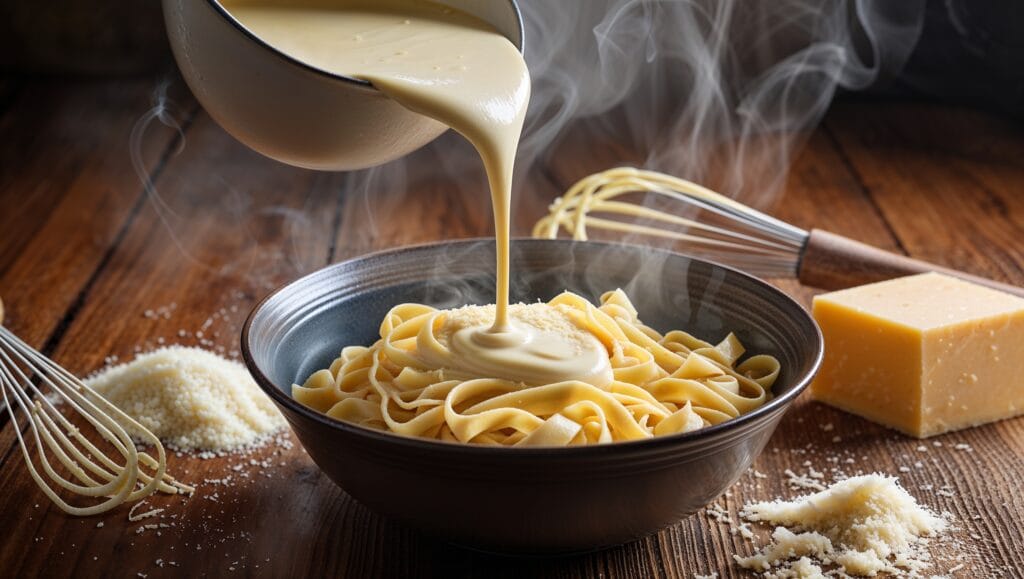
What is Cheese Sauce?
Cheese sauce is a creamy blend of cheese, milk, and other simple ingredients that come together to create a smooth and flavorful topping or base for various dishes. It’s incredibly versatile, enhancing the flavor and texture of foods like pasta, vegetables, and even snacks like nachos.
Why Mastering a Cheese Sauce Recipe Is Essential
A great cheese sauce recipe opens the door to endless culinary possibilities. It:
- Elevates simple meals, making them taste gourmet.
- Saves money compared to store-bought sauces.
- Allows you to customize flavors to suit your preferences.
Whether you’re a seasoned cook or a beginner, mastering this essential recipe can take your kitchen skills to the next level.
Common Mistakes to Avoid with Cheese Sauce Recipes
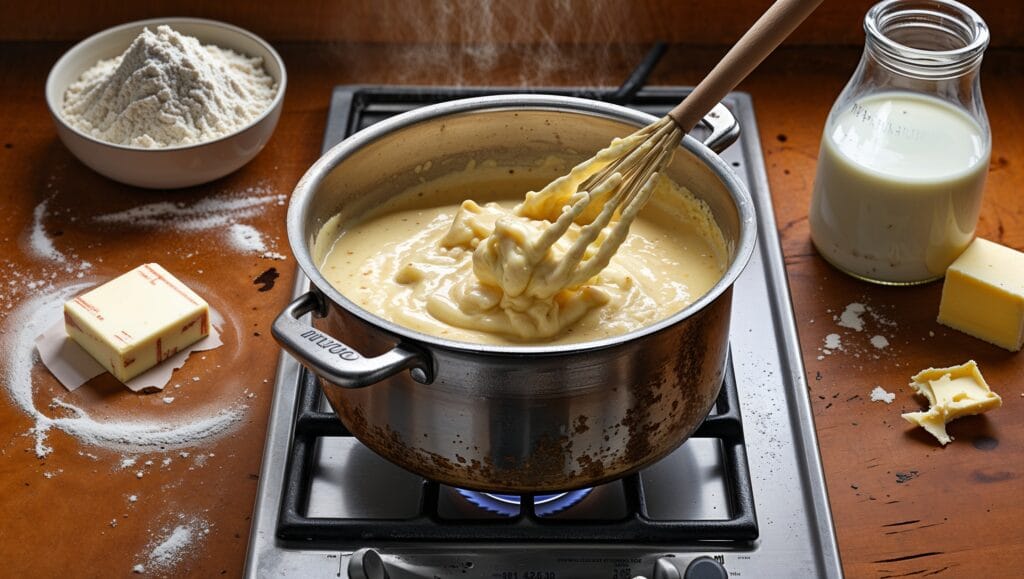
Overheating the Sauce
Heat management is crucial when making a cheese sauce. High temperatures can cause the cheese to separate, resulting in a grainy texture. Always cook over medium or low heat for the best results.
Choosing the Wrong Cheese
Not all cheeses melt the same way. Hard cheeses like Parmesan are excellent for flavor but need to be paired with softer cheeses like cheddar to create the desired creaminess. Avoid pre-shredded cheese, as it contains anti-caking agents that can affect texture.
Skipping the Roux
A roux—a mixture of butter and flour—is the backbone of most cheese sauces. Skipping this step can lead to a sauce that’s too runny or fails to coat your food properly.
How to Get Started with a Cheese Sauce Recipe
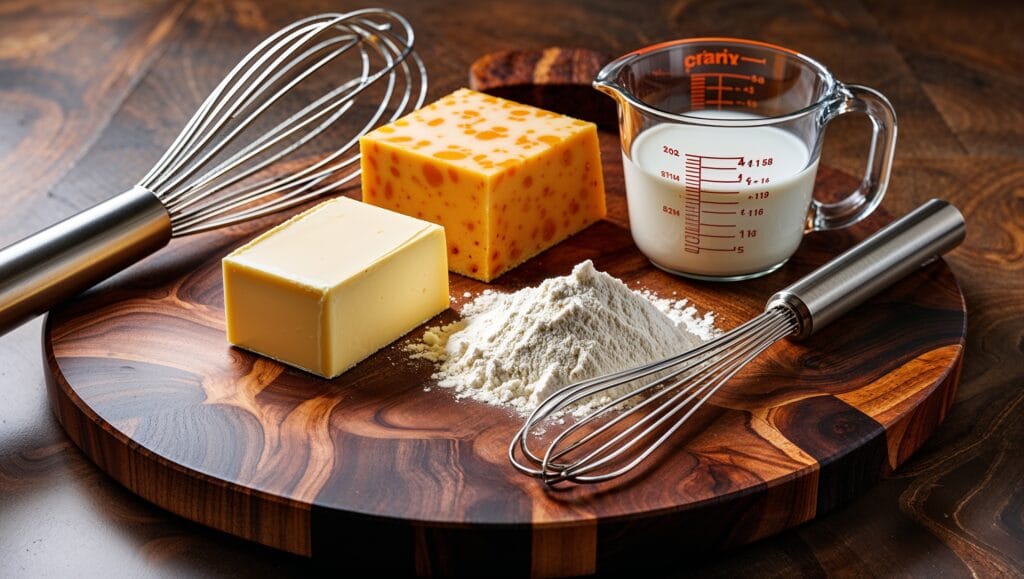
Gathering Your Ingredients
To make the perfect cheese sauce, you’ll need:
- Butter (unsalted is preferred).
- All-purpose flour for the roux.
- Whole milk for creaminess.
- Your choice of cheese (cheddar, mozzarella, or a mix).
- Optional seasonings like garlic powder, paprika, or nutmeg for extra flavor.
Essential Kitchen Tools
- A heavy-bottomed saucepan to prevent scorching.
- A whisk for stirring the roux and ensuring a smooth texture.
- A grater for shredding fresh cheese.
Preparation Tips
- Measure all ingredients beforehand to streamline the process.
- Grate cheese yourself for better melting and flavor.
- Use room-temperature milk to avoid clumps when adding it to the roux.
Step-by-Step Guide to Making a Cheese Sauce
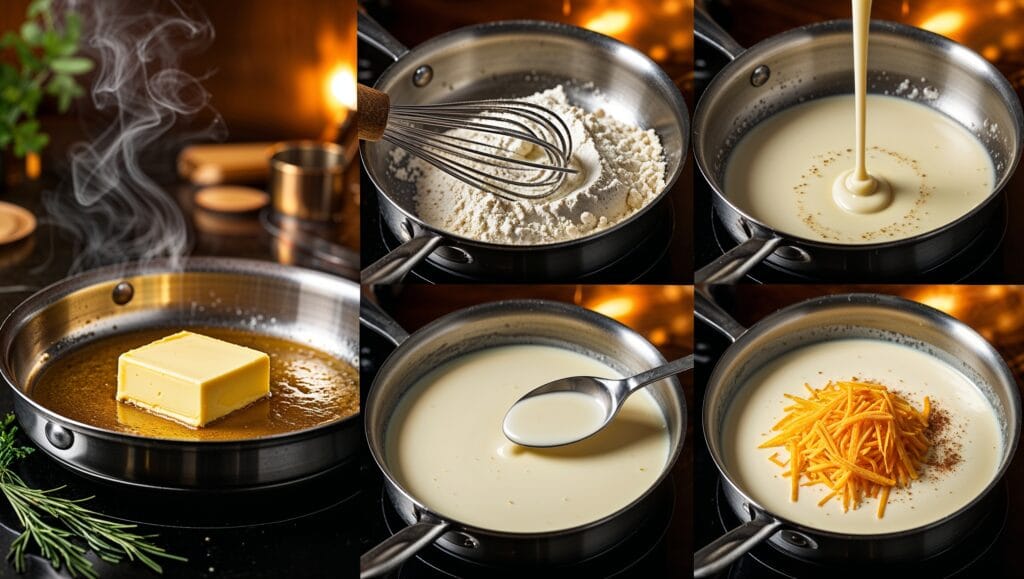
Step 1 – Making the Roux
Start by melting 2 tablespoons of butter in a saucepan over medium heat. Once melted, whisk in 2 tablespoons of all-purpose flour. Stir continuously for 1-2 minutes to cook out the raw flour taste, forming a smooth, golden paste.
Step 2 – Adding Milk
Gradually pour in 1 cup of whole milk while whisking constantly. This step ensures a lump-free sauce. Keep whisking until the mixture thickens into a creamy base.
Step 3 – Melting the Cheese
Reduce the heat to low and add 1 cup of freshly grated cheese. Stir gently until the cheese melts and blends seamlessly into the sauce. Season with salt, pepper, and optional spices like paprika or garlic powder for added flavor.
Expert Tips for Mastering Cheese Sauce
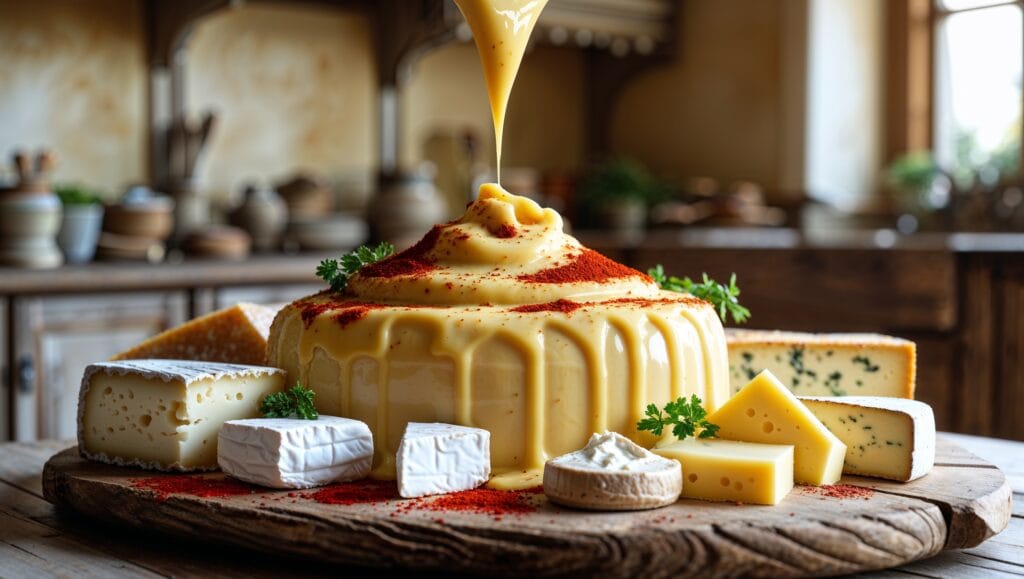
Tip 1 – Experiment with Cheeses
Don’t limit yourself to cheddar. Mix cheeses like Gruyère for nuttiness, Parmesan for sharpness, or cream cheese for extra richness. These combinations create unique flavors that can elevate your dish.
Tip 2 – Adjust Consistency
If your sauce is too thick, add a splash of milk to thin it out. For a thicker sauce, cook it a bit longer over low heat, stirring frequently.
Tip 3 – Flavor Boosters
Enhance your cheese sauce by adding spices like cayenne for a kick, nutmeg for warmth, or mustard powder for tanginess. Fresh herbs like parsley or chives can also add a burst of freshness.
Recipes Using Cheese Sauce
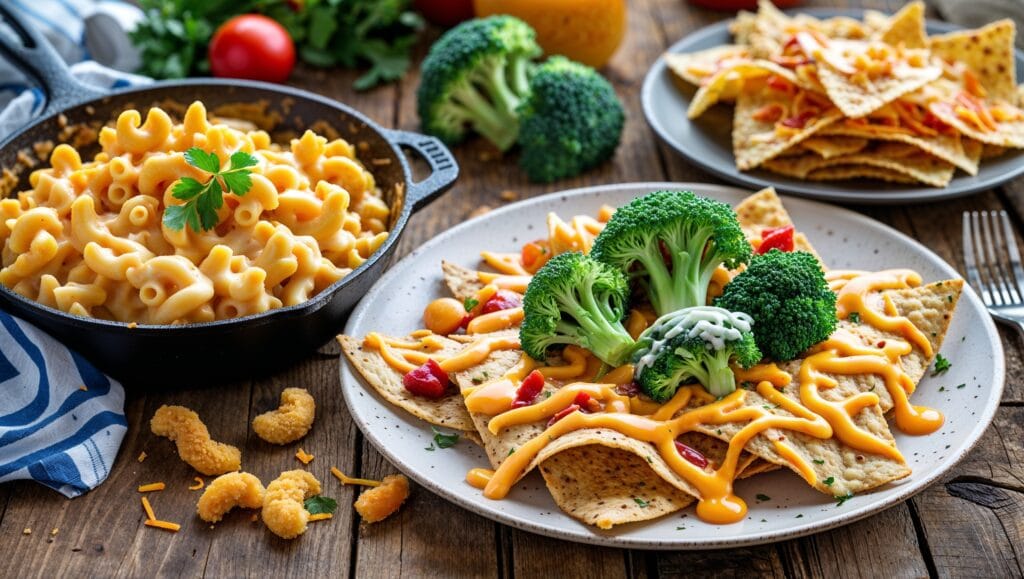
Mac and Cheese Recipe
- Combine cooked macaroni with the cheese sauce, mix well, and bake with a breadcrumb topping for a classic mac and cheese dish.
Broccoli and Cheese Sauce Recipe
- Steam fresh broccoli and drizzle the cheese sauce over the top for a delicious, kid-friendly side dish.
Nacho Cheese Sauce Recipe
- Add a pinch of cayenne and serve the cheese sauce warm with tortilla chips for the ultimate game-day snack.
Frequently Asked Questions About Cheese Sauce
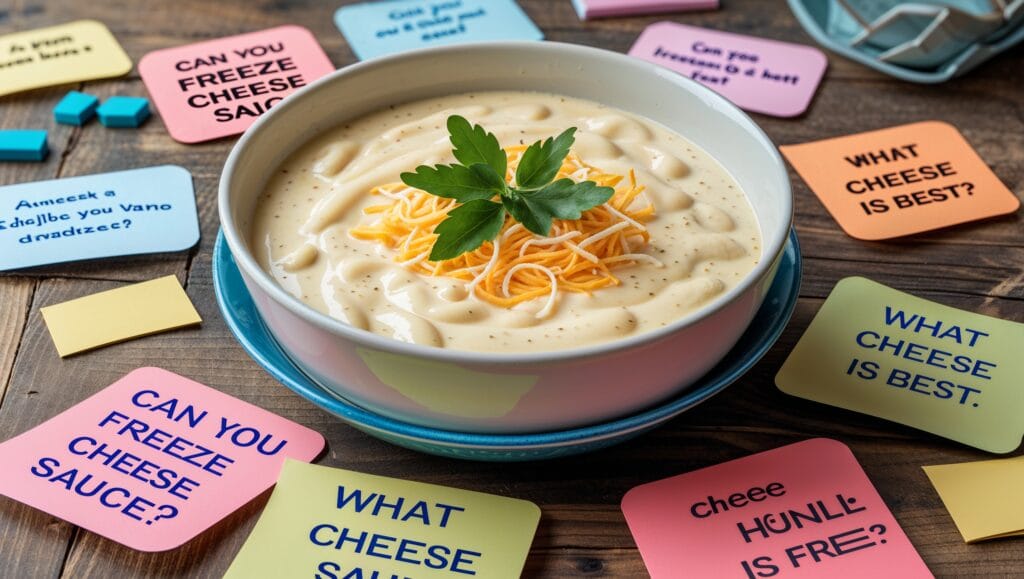
Can You Freeze Cheese Sauce?
Yes, you can freeze cheese sauce in an airtight container for up to 3 months. Thaw in the refrigerator and reheat gently on the stovetop while whisking.
What’s the Best Cheese for a Smooth Sauce?
Soft cheeses like cheddar, mozzarella, or Gouda work best. Avoid aged cheeses, as they may not melt as smoothly.
Can I Make a Vegan Version?
Yes! Use plant-based butter, almond or oat milk, and nutritional yeast for a dairy-free cheese sauce alternative.
Conclusion and Takeaways

Mastering a cheese sauce recipe is a game-changer in the kitchen. With a few simple ingredients and these expert tips, you can create creamy, flavorful sauces for any dish. From classic mac and cheese to vibrant nacho platters and veggie sides, the possibilities are endless.
Now it’s your turn! Try out these recipes and experiment with different cheeses and spices to make them your own. Don’t forget to share your creations in the comments below. And if you found this guide helpful, explore our other posts for more delicious recipes!
FAQs
How do I fix lumpy cheese sauce?
Whisk vigorously and, if needed, strain the sauce to remove lumps.
Can I use low-fat milk?
Yes, but the sauce may not be as rich and creamy as with whole milk.
What’s the best way to reheat cheese sauce?
Heat slowly on the stovetop and stir frequently to prevent separation.
Can I use pre-shredded cheese?
It’s better to grate your own cheese for smoother melting and better flavor.
Is there a gluten-free option for the roux?
Substitute all-purpose flour with gluten-free alternatives like rice flour or cornstarch.
